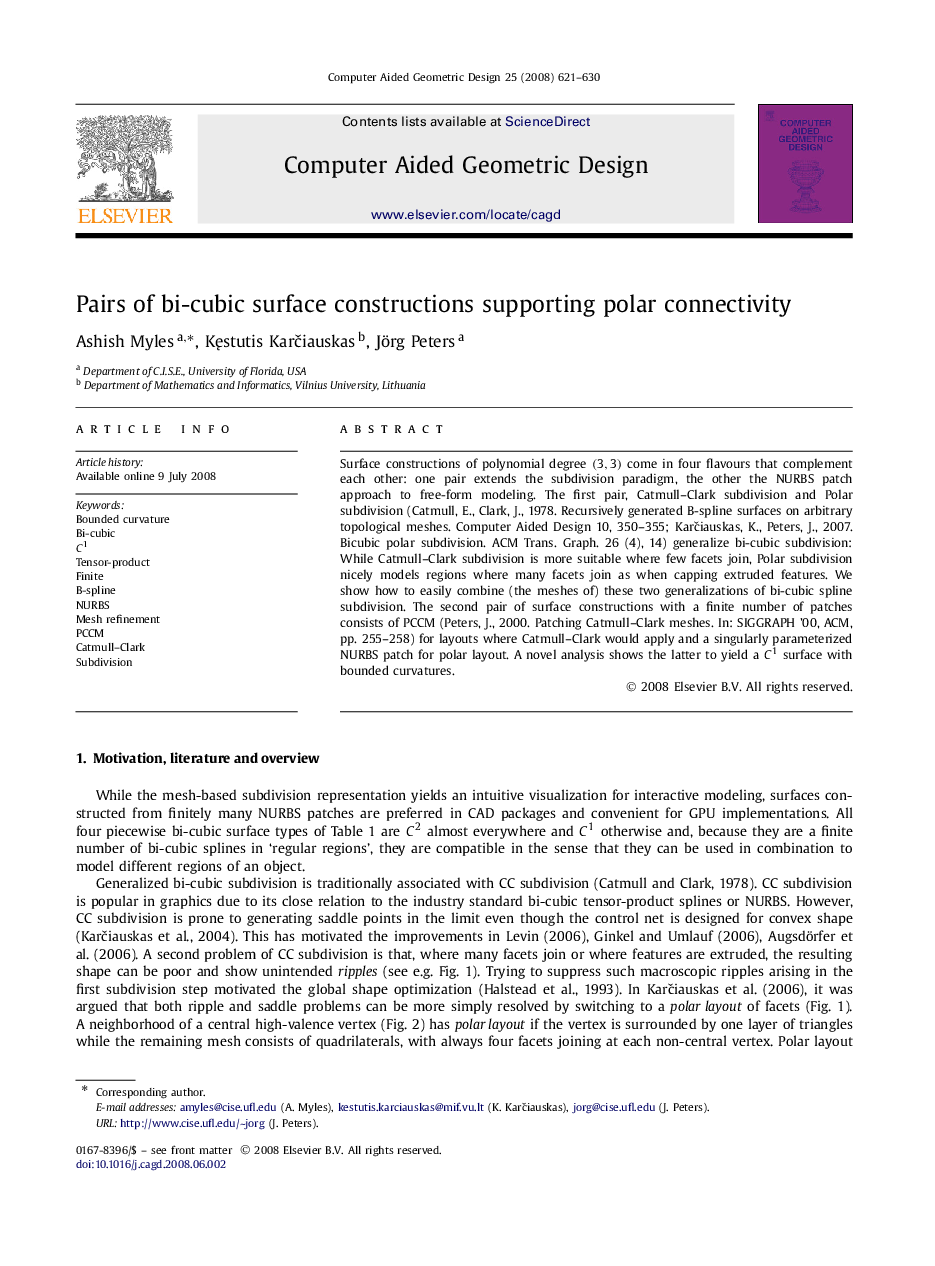| Article ID | Journal | Published Year | Pages | File Type |
|---|---|---|---|---|
| 440684 | Computer Aided Geometric Design | 2008 | 10 Pages |
Surface constructions of polynomial degree (3,3) come in four flavours that complement each other: one pair extends the subdivision paradigm, the other the NURBS patch approach to free-form modeling. The first pair, Catmull–Clark subdivision and Polar subdivision (Catmull, E., Clark, J., 1978. Recursively generated B-spline surfaces on arbitrary topological meshes. Computer Aided Design 10, 350–355; Karčiauskas, K., Peters, J., 2007. Bicubic polar subdivision. ACM Trans. Graph. 26 (4), 14) generalize bi-cubic subdivision: While Catmull–Clark subdivision is more suitable where few facets join, Polar subdivision nicely models regions where many facets join as when capping extruded features. We show how to easily combine (the meshes of) these two generalizations of bi-cubic spline subdivision. The second pair of surface constructions with a finite number of patches consists of PCCM (Peters, J., 2000. Patching Catmull–Clark meshes. In: SIGGRAPH '00, ACM, pp. 255–258) for layouts where Catmull–Clark would apply and a singularly parameterized NURBS patch for polar layout. A novel analysis shows the latter to yield a C1 surface with bounded curvatures.
